July 3, 2016
Macalester-Groveland, Rondo (Frogtown), North End
16.7 Miles
The creativity of fellow Saint Paulites continues to dazzle and impress. Unique yards and remarkable gardens, the most commonplace form of self-expression I see on rides, is evident in every part of Saint Paul, which this trip proved.
With an abundance of streets – more than 800 miles – in Saint Paul to ride, it takes something compelling for me to spend a lot of time on one of the City’s many alleys. Portland Avenue’s change from a paved street to gravel alley where it meets Griggs Street in Macalester-Groveland provided that rationale.

The unmistakable change in the road surface where Portland meets Griggs.

The sign clued me into the reason the pavement changed to gravel.
The Portland Avenue alley continues west for a short block, then turns south where it parallels Ayd Mill Road and railroad tracks.

Two garages on the east side of the alley, and some landscaping on the top of the hill overlooking Ayd Mill Road.
Garages line much of the gravel alley, except along a hill that leads to the tracks. Fences, chairs, a picnic table and manicured gardens led me to stop.

Picnic tables, benches and short fences near shade trees create an inviting spot.

Flower and crop gardens line the alley.
Donna Krause has lived along the “Portland alley” for more than 30 years. The gardens and accoutrements – her creations – are only a few years old. “It was just weeds like the patch back there that you can see beyond the yard and that’s what it was. just complete weeds all the way up to me right here.”
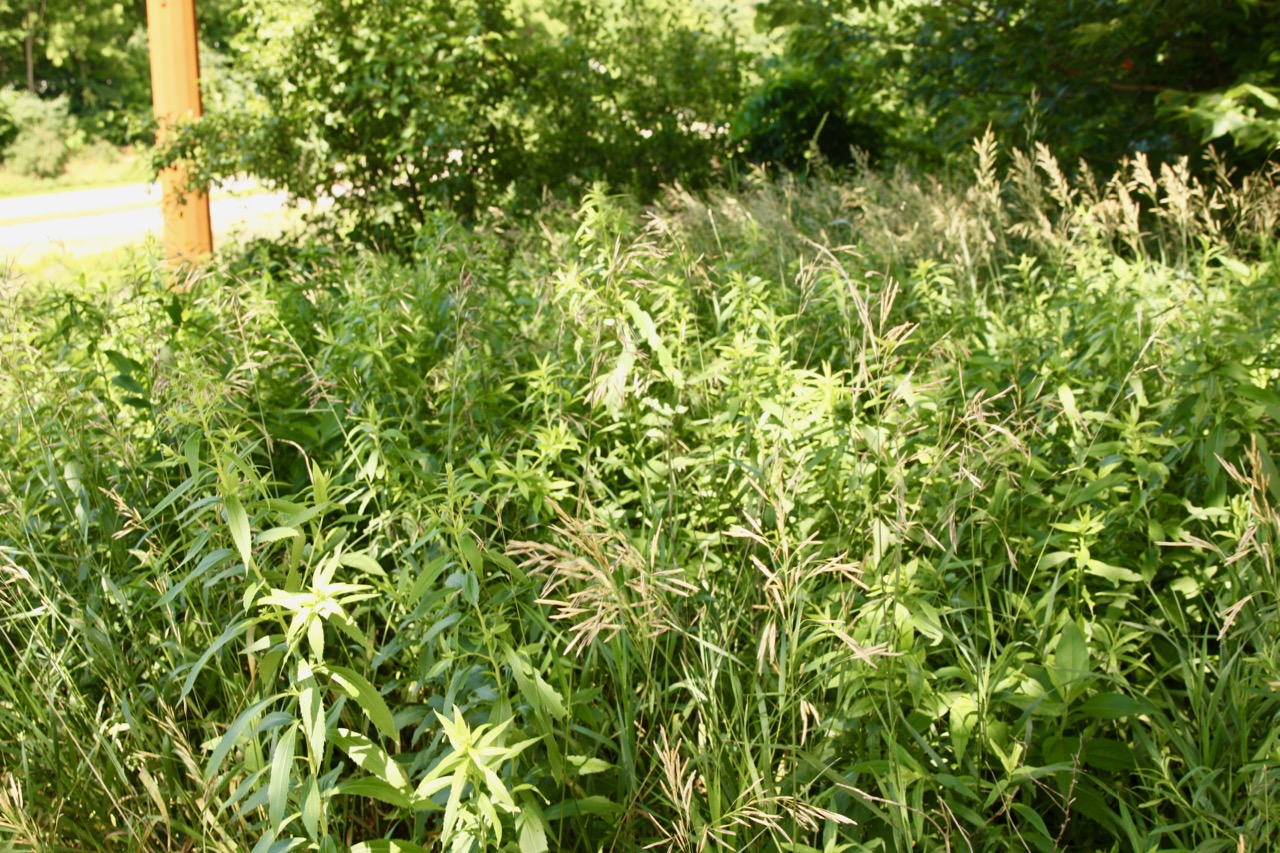
Before Donna went to work on her recreation area it looked like this.
Donna said, “I don’t know why I even decided to do it quite honestly, it was just kind of like on a whim.”

Donna Krause poses in the garden area that she created for her and her neighbors.
Donna continued, “I wanted a vegetable garden. My yard was already done and I really don’t have space for a vegetable garden, right? You know unless I took my backyard and did it and so I wanted to raise vegetables. So I thought you know what there’s an ideal space; it’s doing nothing. And so that’s how it all started.”

Crops in Donna’s gardens include cabbage, peas and beans.

Another of Donna’s gardens. The boards in the gardens, the gates and fencing are scrap wood and pieces of an old crib.
And oh, does Donna have gardens. She has an herb garden, asparagus, flowers, 15 types of peppers, 20 tomato varieties, and potatoes. “We went crazy with the potatoes. My mom wanted potatoes. (There are) sunflowers and then these are all potatoes and cucumbers. We got beans and peas over there. We got peas along this fence here. Then these are mini garden for the mini pumpkins for the kids.”

Pallets, a crib, scrap lumber and bricks are just some of the discarded items Donna has reused in her gardens.
Donna added decorative elements such as edging, fences, steps, and railings, much of which she got from cleaning out the garage. “I had a lot of spare lumber. A lot of those logs those were in my yard at one time, you know, so I just repainted them.”

“I brought these rocks home from Arkansas. So it’s the Arkansas garden.”
“Everything (in the garden) is a little bit of a paradise.”

Donna’s garden spans at least 100 feet of land along the Ayd Mill Road railroad tracks.
The neighbors, save one, love what Donna’s done with the area. Donna admitted she had a little fun at his expense. “We had a cranky guy on the end down there. He’s like, ‘You’re not coming down to my house,’ I said, ‘Oh, yeah, we’re going all the way down to the river.’” She told me, laughing at the recollection.

The picnic table and chairs on a couple of the places people can sit and enjoy the outdoors.
Neighbors, Donna said, enjoy hanging out in the garden. “I think that they come up here with their kids a lot. You know, I think and just hang out and I come up here and I’ll sit here at night and stuff, but the idea is for people to come up here and sit and just enjoy it.”

The view looking northwest from one of the sitting areas. Ayd Mill Road is in the background. The chairs and the picnic table were one of the recent additions to Donna’s garden.
“Look at the expanse of the sky you have here. Yeah, it’s huge and the moon and the stars and I mean, it’s really it’s like a little mountain top, you know in the city.”

Donna built steps leading down from the sitting area to another garden.
In Donna’s view, humans aren’t the only lovers of her recreational area. “The animals obviously love it. We had deer come up here. And then we have a Rocky Raccoon around, comes and eats cat nuggets at night, and the snake lives in the rocks over there.”
“I think God brings me my vision, quite honestly, because I don’t know how I did all this when I look at it.”
Creating gardens and outdoor living spaces could become a new career for Donna, who has done accounting and finance for most of her adult life. “Ultimately I want to start a business called ‘First Stage.’ I would like to do this for people in their yards, small places; don’t have to use a lot of space, and integrate things from their garage, their house. their junk, paint it, fix it, make it look nice and have it so their kids can enjoy it or they can enjoy it and they can have food products in their yard without having to delegate a lot of space.”
The Lexington on Grand Avenue, often called “The Lex”, has been one of Saint Paul’s premier and best known restaurants since the mid-1930s. Far fewer people know of the other establishment with the same name that is just a mile to the north.

The unfamiliar Lex, a private club at 976 Concordia Avenue.
The Lex, at 976 Concordia Avenue at Chatsworth in Rondo, is a private club in the former Attucks Brooks American Legion Post 606.

The Lex is a private club in the Rondo neighborhood on Concordia Avenue at Chatsworth.

The building looks very much the same as it did in 1975 when it was Attucks Brooks American Legion Post 606. Courtesy MNHS.
The Attucks Brooks Legion Post, which closed in 2012, left a lasting mark in Saint Paul. It was an important part of Rondo, where it served African American veterans for some 40 years. The post sponsored a baseball team, coached by Billy Peterson, that produced some of Minnesota’s best ballplayers including Dave Winfield and Paul Molitor.

The patio and courtyard behind The Lex.
According to published reports, complaints from neighbors about noise, suspected drug dealing, license violations and other illegal activities at Attucks Brooks led to a crackdown by the police and city officials, and ultimately, the closing of the Post in 2012. The building was sold then and updated by the new owners, who improved the interior and exterior of the property and increased security.

Fences, gates and cameras are some of the security measures owners of The Lex took to eliminate problems.
Sometime after this ride, The Lex was renamed The Taste of Rondo.
Continuing with Frogtown landmarks, the historic West Minnehaha Recreation Center – a.k.a. West Minne – sits mid-block on Minnehaha Avenue at St. Albans in the northern edge of Frogtown. The original rec center, which is dwarfed by multiple additions, was another of Cap Wigington’s designs. Wigington was the first Black municipal architect in the U.S.
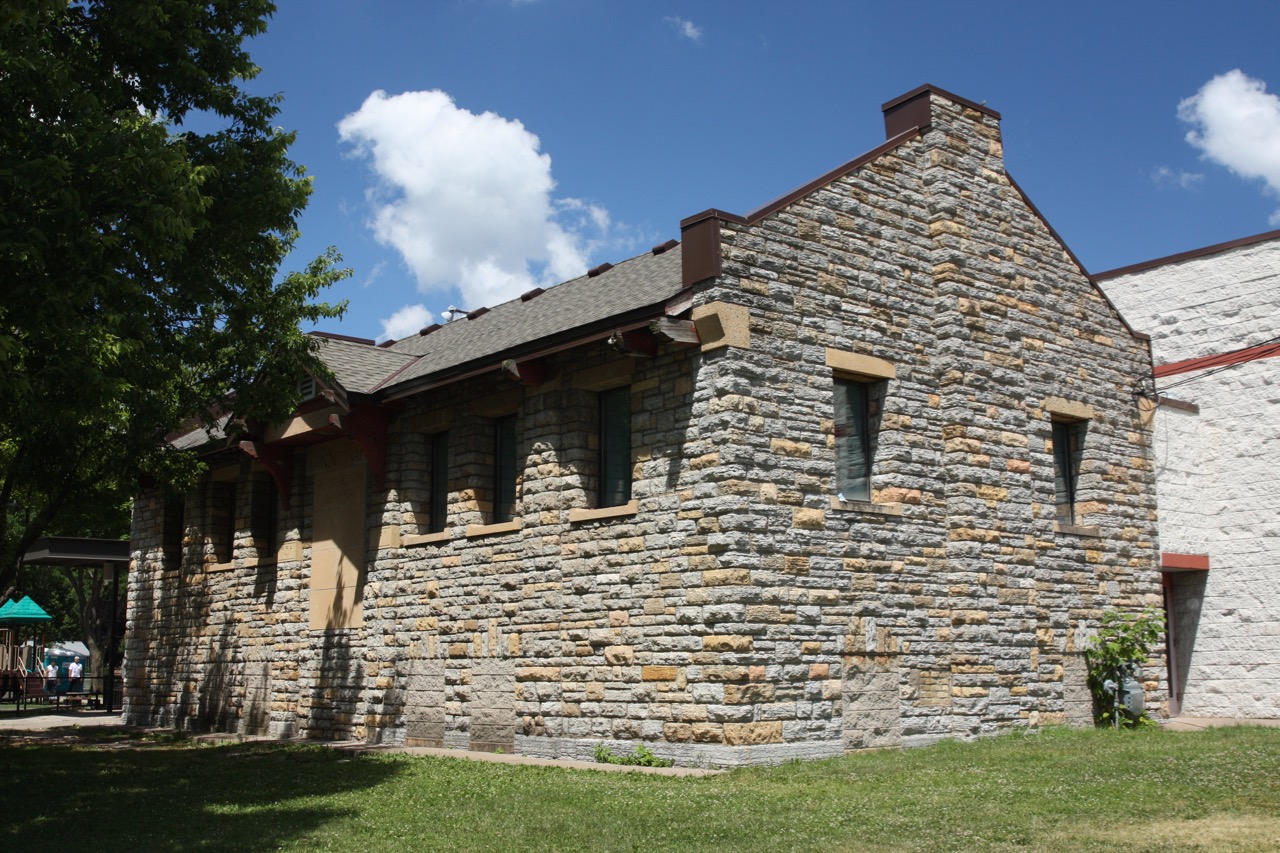
The original West Minnehaha Rec Center building is the small brick structure. The white building is part of one of the additions.

The brickwork by Works Progress Administration masons in 1937 and ’38 is interrupted by more recently added blocks.
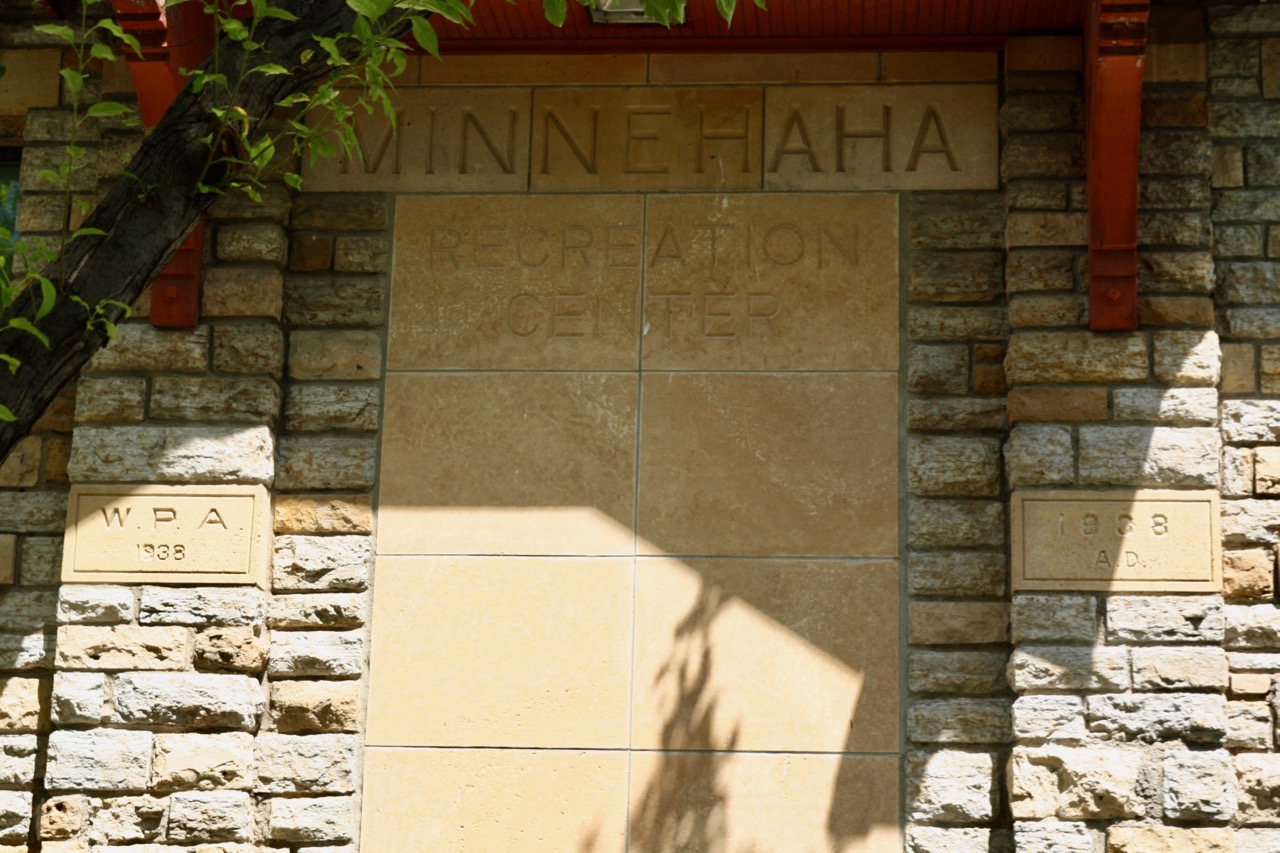
The original entrance to West Minne, 685 W Minnehaha Avenue.

The current entrance to the rec center, with the original building on the right.

Signs of wear include peeling paint and rotting beams on the 1938 building.

Tennis and basketball courts and several large athletic fields are among West Minne’s amenities.

This former cigar factory and artist studio, at 629 Kent Street at Lafond, was built in 1903. Ramsey County tax records say it is now a single family residence.
The Nickel Joint bar has been at the corner of Blair Avenue and Mackubin Street since 1903, 1905 or 1906, depending upon the source.

The Nickle Joint in 1957, when it was strictly a Schmidt bar.

The Nickel Joint has been a Frogtown mainstay since the early 1900s. Notice the the signs for two beers, Schmidt and Pig’s Eye, that were brewed in Saint Paul
The Nickel Joint is best known as the home of the Baseball Old Timers Hot Stove League since January 1939. According to a Saint Paul Historical article by Jane McClure, the Hot Stove League was started by 14 members of the New York Yankees farm system who lived in Saint Paul. That’s interesting because at that time the Saints were a minor league affiliate of the Chicago White Sox.
North End
Topping Street sits about two blocks north of the North End – Frogtown border. Topping is another zoning oddity with three homes and several industrial properties, including the City’s asphalt plant.

Only the one corner and the peak of 461 Topping Street is visible from the road. The building to the right part of Saint Paul Public Works’ asphalt plant.
The front of the small, light green home at 461 Topping Street was nearly obscured by bushes, interrupted only by a narrow driveway. A post adorned with three signs sat prominently in a lily-filled garden adjacent to the driveway. The most intriguing sign read “Foundry Park Botanical Rock Gardens” meaning there was a story to be discovered.

The Foundry Park sign, bottom, is what lead me to investigate and meet Kevin O’Connor.

Kevin O’Connor in the urban oasis that is his back yard.
Kevin O’Connor has lived on Topping Street since he was born in 1960, except for the four years he served in the Navy and a short time after he got married. He spent his formative years with his parents living at 463 Topping. Kevin bought 461 more than 30 years ago so he could help his mom as she aged.
“This (street) used to all be residential all the way up there, all the way to the corner,” Kevin said pointing west, “and then people got older moved out, and the empty lot down there, that house caught on fire and they took it out.”
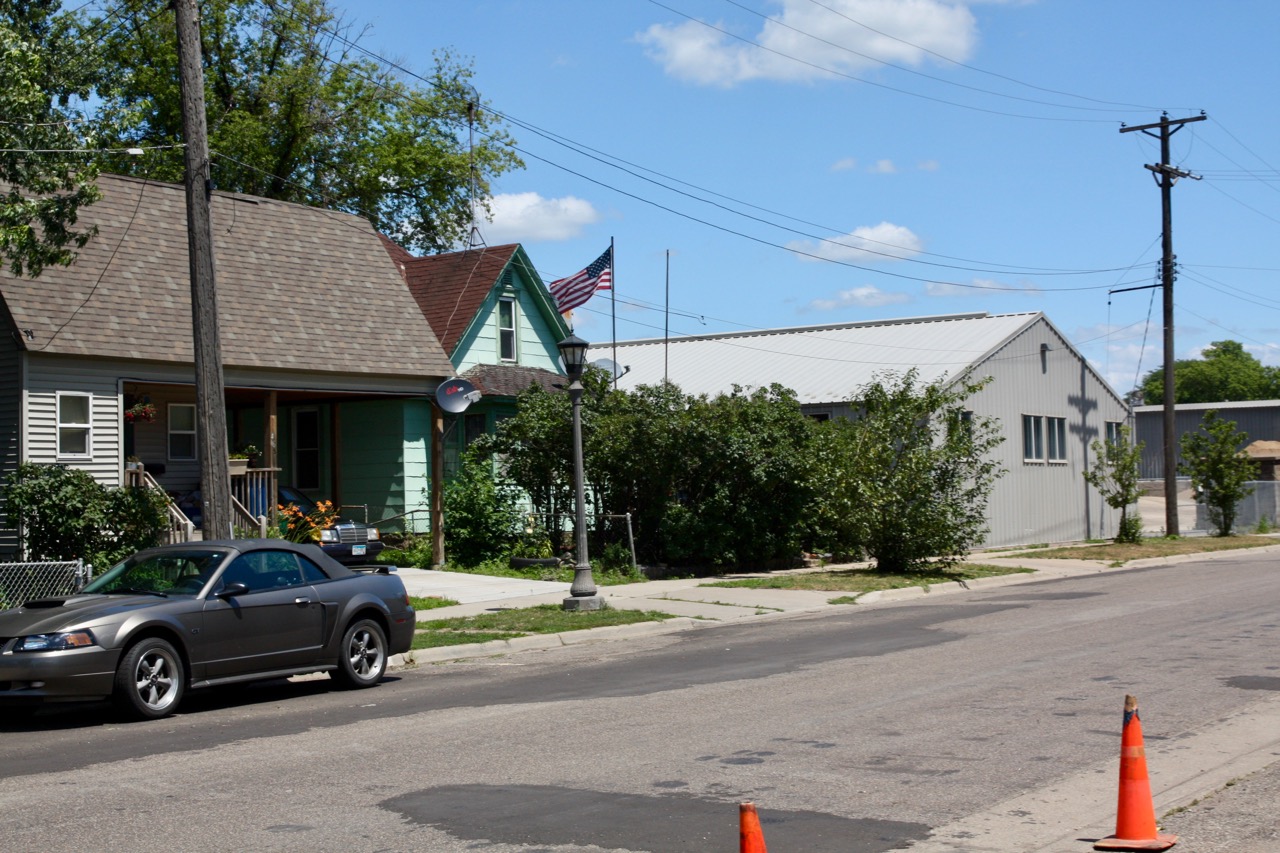
Kevin O’Connor grew up in the house on the left, 463 Topping. He bought the house next door in 1988 so he could live close to his mother.
And that left three homes on Topping Street. “When I was a kid growing up there used to always be this rumor that the asphalt plant, which goes up to these three houses, that the city’s going to buy these three houses at some point so they can round off the asphalt plant. It’s comical that these are last three standing.”

The first resident of 461 Topping was Patrick Walsh, an assistant engineer for Steam Fire Engine No. 8 at 8th and Minnesota Street.
As industrial as Topping and Burgess Street, a block north of Topping, are today, they were all the more so 40-plus years ago. “All this stuff used to be Peerless Welding along here,” Kevin remarked as he pointed east along Topping Street. “They worked with Amhoist and a lot of that stuff and then when they left it all went empty and now it’s Pallet Recycling over there and Martin Furniture Warehouse over there.”

Pallet Recycling is a series of more than half a dozen buildings which occupies a big piece of the two blocks bordered by Topping and Burgess Streets to the south and north, and Western and Mackubin, on the east and west.

Martin Furniture and Mattress specializes in making mattresses for college residence halls, camps, treatment facilities, hospitals, and other institutional use. According to their website, Martin also makes other bedroom and living room furniture.

The City’s asphalt plant as seen from Richard’s back yard. The cyclone fence separates Kevin’s property from that of the asphalt plant.
The Asphalt Plant predates Richard’s time on Topping Street by many years. According to the City’s Public Works Department website, this facility, built in 1962, replaced one constructed in 1912. Kevin recounted a childhood memory related to the plant. “I used to have a Sandbox in the backyard and workers used to bring get a thing of sand and dump it over the fence. That was kinda neat.”
As you’d imagine the asphalt plant generates noise during production and when loading trucks, but most of the time, Kevin told me, it’s a great neighbor. “It’s very quiet evenings and weekends. There’s nothing going on. During the day, it’s busy; the trucks are lined up and you got that big drum going around. In the winter, there’s nothing, so that’s a nice thing. You do get sand blowing around and makes a little dust here in there but then again, it’s, you know, the price you pay for having no neighbors on one side of ya’.”

For years Kevin has added plants and flowers to his yard, creating a lush, green hideaway with narrow paths, a fountain, and a clubhouse he build for his grandson, William.
Kevin’s yard, which he dubbed “Foundry Park Botanical Rock Gardens”, is quite a hangout. The moniker evokes the similarly named Foundry Park, which was a small green space nearby created for employees of the long-gone St. Paul Foundry. That park was redeveloped about 1937.

The fountain is an O’Connor family heirloom.

Grandson William has his own clubhouse in Kevin’s backyard.
Kevin’s yard has an abundance of flowers. “I started out mostly with the planting day lilies and irises and stuff. They’re hearty. They grow well and come back every year. Then I decided I wanted to start making butterfly gardens to try to help monarchs along the way. “
Kevin collected his first milkweed plants growing wild around his neighborhood and branched out from there. “I started buying different kinds of milkweed. These are white milkweed. I have some swamp milkweed.” Over the years Kevin has added more flowering plants like cone flowers and the oddly but aptly named Licorice Mint Hyssop, which smells like a mix of licorice and mint.

One of the white milkweed plants.

It was cool to see cacti in the gardens.

The anchor represents the four years Kevin served in the Navy.
Upon leaving Kevin’s I took my time looking over the immediate neighborhood. Of particular interest was the Rube Goldberg-like asphalt plant next door.
Another large presence along the 400 block of Burgess Street is Peterson Brothers Roofing.

The small office disguises the size of the buildings on Burgess Street that belong to Peterson Brothers Roofing.

This is only a portion of the Peterson Brothers main building on the north side of Burgess.

The Quonset hut-shaped building is on the south side of Burgess.
Wrapping my stops for this ride on Burgess, and in the North End, was at the City’s Sewer Maintenance building and yard at 419 Burgess.
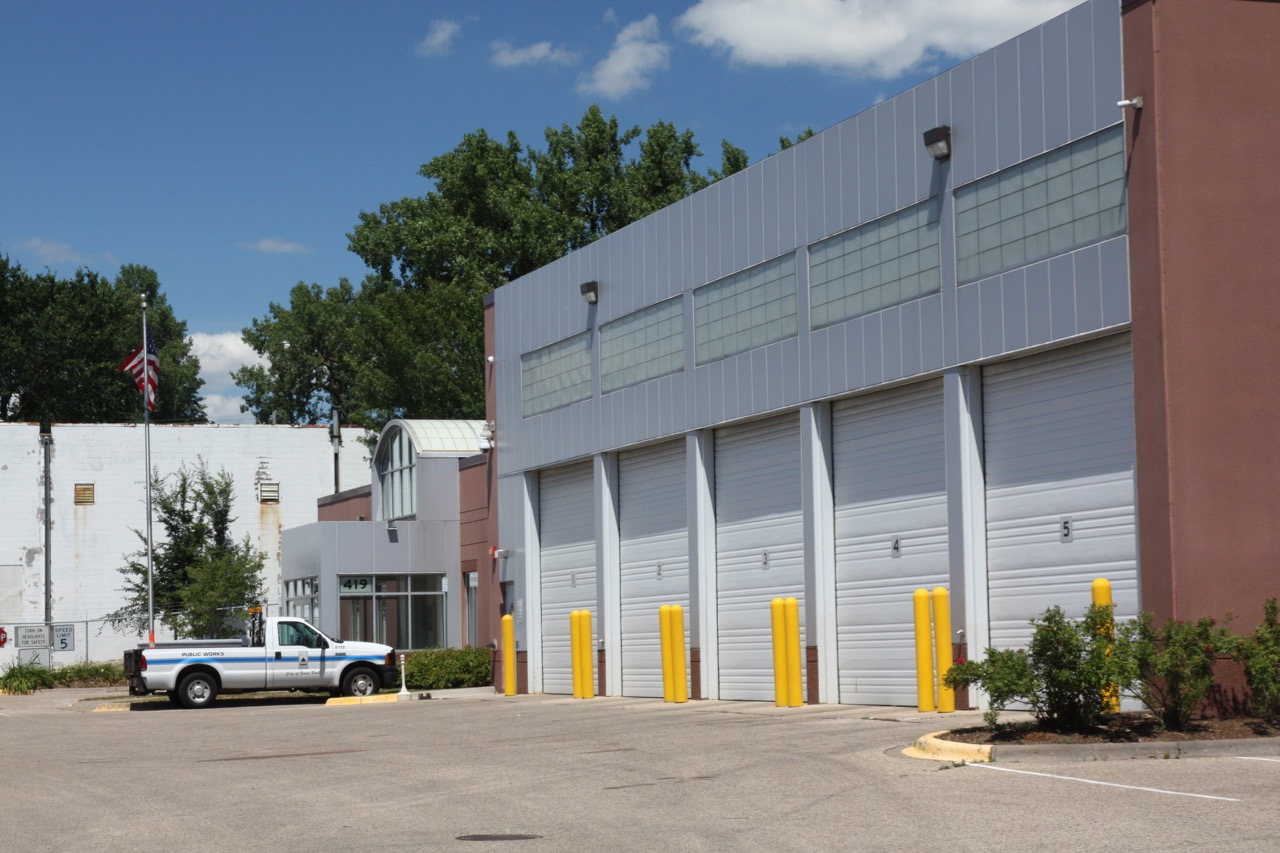
Saint Paul’s Sewer Maintenance building at 461 Burgess looks like it is was recently renovated, expanded, or built.
This ride increased my interest in researching the rich history of the near North End. Between its ties to Saint Paul’s prolific railroad industry and the mix of homes and industry, no doubt there will be much more I’ll learn here on a future trip.
Click here for the map of this ride.
